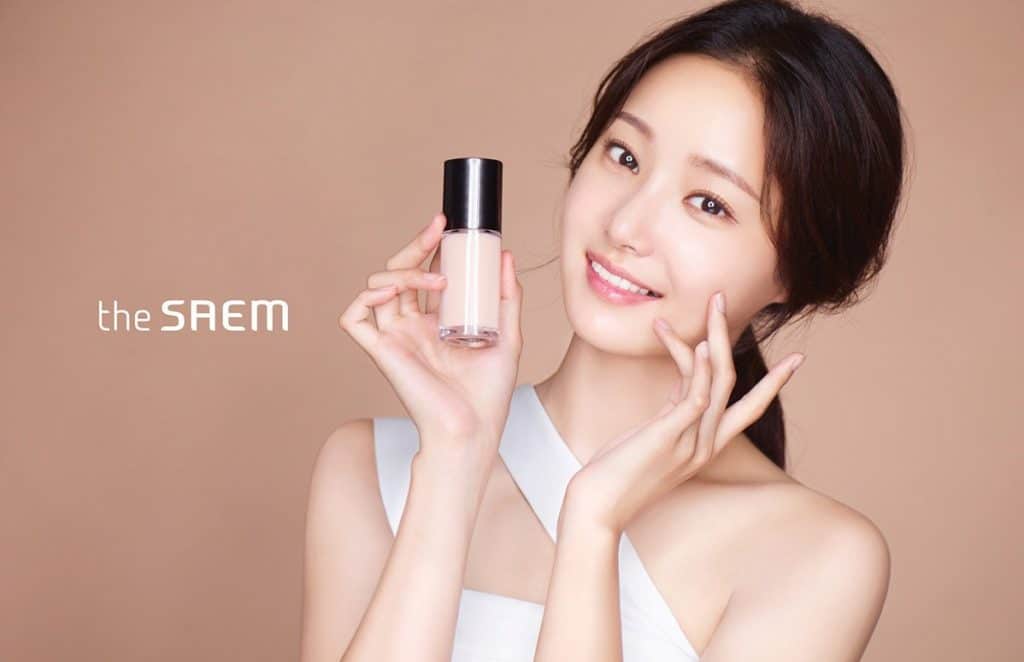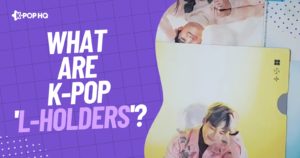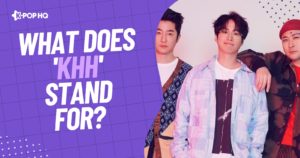BTS, OTP, and even the ‘K’ in K-Pop — the Korean entertainment scene is full of acronyms, and FOTG is just one of many. Of course, when you’re new to K-Pop, making sense of all these terms can be tough.
If you’ve heard your favorite idol referred to as the FOTG and you’re not sure what it means, don’t worry. We’ve got you covered with a simple explanation, from what the letters stand for to what being an FOTG actually means.
FOTG meaning in K-Pop
In a nutshell: The full form of FOTG in K-Pop is ‘Face of the Group’. The FOTG is the representative member of a K-Pop act — the one who draws in the most attention and popularity from the general public. Keep reading to find out exactly what the FOTG does, the difference between an FOTG and a visual, and more.
What does the FOTG do?
Since the FOTG is meant to draw in public attention, it should come as no surprise that idols who are considered the Face tend to have a lot of schedules, public appearances, and solo gigs. These activities include:
- Variety show appearances
- Brand endorsement deals
- Guest roles on K-Dramas
- Event appearances
- And more

Is FOTG an official position?
Generally speaking, there are five official positions in K-Pop groups: Vocalist, Dancer, Rapper, Leader, and Visual. Many of these can be split into sub positions, such as main vocal, lead vocal, main rapper, lead rapper, main dancer, and lead dancer.
Most of the time, face of the group isn’t an official position listed by the agency.
K-Pop companies do usually know who the face of their group is, and many agencies promote the FOTG more than other members by booking them on variety shows and in CFs. However, when it comes to the FOTG label itself, fans are usually the ones to bestow the title on a member.
Can there be more than one FOTG?
Yes! There can be more than one Face in a K-Pop group. In most cases, there tends to be one singular member who stands out among the rest in popularity.
However, if a group has two members who are particularly well-known among the public, fans may consider both of them the FOTG. For example, Irene and Joy of Red Velvet are both often deemed the face of the group by their respective fans.
The face of the group may also change across different countries. In South Korea, most consider Girls Planet 999 winner Chaehyun to be the face of Kep1er. For fans in China, however, Xiaoting is the FOTG.
Can the FOTG change?
Yes! It often takes several months or years for a K-Pop group to establish its FOTG, and from that point on, the face tends to hold their position. However, it’s not unheard of for the FOTG to change over time. After all, popularity isn’t set in stone. If a member begins to score high-profile endorsement deals or top K-Drama roles, they may quickly find themselves becoming the representative of their group.
Naturally, the position can also change if the original FOTG leaves the group. For example, Yeonwoo was once considered the face of MOMOLAND. However, after she departed the group in 2019, JooE became the new designated FOTG.

What’s makes the FOTG position distinct?
What’s the difference between FOTG and visual?
The face of the group and the visual of a group aren’t the same thing, but they do often overlap.
The word “face” may lead you to believe that looks are important when it comes to being the FOTG, but that isn’t necessarily the case. Many idols become the representative member of their group due to their talent, personality, or variety skills rather than looks.
In short, the visual is the member who best meets Korean beauty standards. Of course, it’s common for the prettiest or most handsome idol in a group to attract the most buzz, so the face of a group is often the visual too.

What’s the difference between FOTG and center?
Again, it’s not uncommon for one member to hold both the center and face of the group positions, but they do have very distinct differences.
Simply put, the center of a group is the member who is most often placed in the physical center of group choreographies — particularly at the song’s beginning, end, or chorus. The center usually stands in the middle of the group for red carpet photos, interviews, and official photoshoots.
Naturally, the center gets the most eyes on them during performances and official group events. However, these eyes are typically those of existing fans rather than the general public. This is what separates the center position from the face of the group, with the FOTG receiving the most public attention.
How do Koreans say FOTG?
Korean K-Pop fans have a few words that can be used to describe the face of a group:
‘원탑’ = “One Top”
Pronounced just like “one top”, the meaning of this word is self explanatory. The “one top” is the member with the strongest presence in the group — the one who may even have more activities and acknowledgement than the group itself. Koreans have compared the “one top” in K-Pop groups to Beyoncé in Destiny’s Child, or Nicole Scherzinger in the Pussycat Dolls.
‘아이돌 그룹 그자체인 멤버’ = “The Group Itself”
Sometimes, fans in Korea use a whole sentence to describe the FOTG: “the member who is the idol group itself.”
‘덕후몰이’ = “Fan-Driver”
Pronounced duhk-hoo-moll-ee, this word roughly translates as “fan-driver” — the member who drives the most fans to themselves, and therefore to the group. “덕후” comes from the Japanese word “otaku,” which refers to people with intense interests in specific niches like gaming or anime.
Who are some FOTGs in K-Pop?
Since FOTG isn’t an official position, the face of the group is often widely debated among fandoms. That said, there’s usually one member in the group who most fans can unanimously agree deserves the title. According to the Korean portal Namu, here are some members K-fans have deemed the “one top”:
Girl group FOTGs
- Jennie in BLACKPINK
- Irene in Red Velvet
- Karina in aespa
- Wonyoung in IVE
- Chuu in LOONA

Boy group FOTGs
- Cha Eunwoo in ASTRO
- Jo Kwon in 2AM
- Kim Yohan in WEi
- Baekhyun in EXO
- G-Dragon in BIGBANG

Conclusion
Now you know: This position goes to the member with the most recognition and popularity among the general public, coinciding with a large number of individual schedules such as CFs and variety show appearances.







